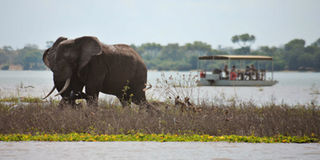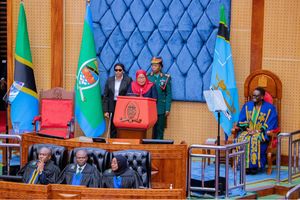Scientists baffled by rare turtle

What you need to know:
- Scientists say this is the first time that a relatively rare terrapin, yellowish in colour, has been found at River Rufiji which cuts through the 54,600 square kilometre game reserve.
Arusha. A rare fresh water turtle has been found in Selous Game Reserve, raising the profile of the largest game protected area in Africa as a biodiversity reserve of global significance.
Scientists say this is the first time that a relatively rare terrapin, yellowish in colour, has been found at River Rufiji which cuts through the 54,600 square kilometre game reserve.
Walter Jubber and Martin Leyendecker are wildlife scientists who revealed their discovery in Biodiversity Observations, an electronic journal published by the University of Cape Town in South Africa.
According to them, the turtle specie was not only rare but the scientists are baffled as to why it lacked melanin. “Only fish, amphibia, reptiles and birds develop xanthism,” they pointed out.
But Rolf Baldus, a wildlife biologist who has done extensive research in Selous, said the rare turtle specie has been confirmed at the Kilombero and Ruaha rivers but not at the downstream Rufiji river which the two rivers drain into.
Between 1988 and the late 1990s, Dr Baldus was the manager of the German-supported Selous Conservation Programme which laid down ways to enhance conservation and sustainable utilisation of natural resources in the vast reserve.
The discovery, he said, would raise the status of the game reserve considered one of the largest faunal reserves in the world and which was in 1982 designated a Unesco Heritage Site due to the diversity of its wildlife and undisturbed nature which include extensive floodplains.
Consultations with other researchers later confirmed that the reptile was indeed a Zambezi Flap-shelled or Soft-shelled Terrapin which had made its way onto land from the Rufiji River.




